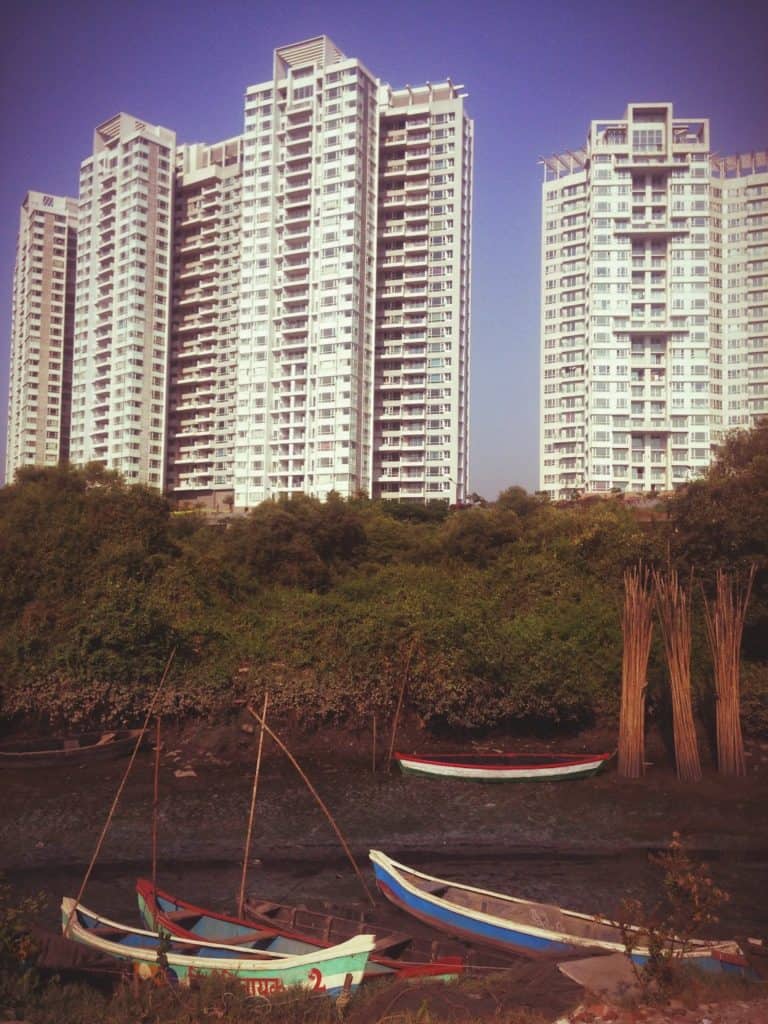The 6th report by the Intergovernmental Panel on Climate Change (IPCC), titled, ‘IPCC 6th Assessment Report Working Group II (AR6)’ was released globally on February 28th. Analysing environments of 195 member countries, the report has, this year, revealed that the global climate crisis is possibly much worse than we had thought. It states clearly that around 40% of the world’s population is “highly vulnerable” to climate change. The IPCC report refers to Mumbai multiple times and says the city has new challenges ahead as it grapples with coastal degradation and temperature changes.
Climate impact on the urban poor
Mumbai is home to nearly 20 million people, in the same list as Caira, Beijing and Dhaka. The report adds that, given migration patterns, rural poverty is being replaced by urban poverty, at the backdrop of growing income inequality. The report asserts that income disparity and housing crisis could make several populations more susceptible to the climate crisis.
As the climate crisis worsens, Mumbai’s deeply vulnerable coast may not be able to protect its people, a majority of whom live in slum settlements. Mumbai’s inability to house its population has led to severe congestion and socio-economic divide, particularly in Dharavi, Asia’s largest slum, and a direct consequence of urban planning gone wrong. About 42% of the city’s residents live in slum settlements, in decrepit, often temporary shelters providing a weak resistance to severe weather events.
What’s more, as the IPCC report states, Mumbai is worsening its climate resilience with new developmental projects and a general denial of climate emergency.
IPCC report warns of huge impact of coastal flooding
The report finds Asia the most vulnerable to Sea Level Rise (SLR), “in terms of the number of people living in low-elevation coastal zones and the number of people exposed to flooding from 1-in-100 year storm surge events”. India is one of twelve countries most exposed to SLR and flood events. In analysing flood losses to different cities, IPCC found Mumbai’s SLR damages to amount to USD 49-50 billion annually by 2050, with a possibility of an increase by a factor of 2.9 by 2070. (1 billion USD works out to around Rs 7600 crores, so the cost of the damages could work to almost 10 times BMC’s annual budget!)
A 2020 study by McKinsey Global Institute found potential damages could cost $920 billion by 2050, up from $580 billion until that year. Additionally, floodwater levels could rise to 82 cm, up from less than 50 cm that year, and the affected area in the city could go from 46% to 60%.
Almost 3 million people in Mumbai live within a kilometre of the coastline (high-tide line) and are under “severe threat”, the report states. On the connection(s) between environmental sustainability and economic poverty, the IPCC stated how, in Mumbai, houses of poorer families require repeated repairs to secure them in face of flood damage. The cumulative costs of which acquire a greater amount of their income, when compared to wealthier families in the city.
Rampant construction in the city is reducing Mumbai’s mangroves, which are responsible for carrying flood water out of the city. It is not that the city’s administration lacks the knowledge of flood prevention, but that they turn a blind eye, actively or not. Excessive constructions in low-lying areas that are prone to waterlogging continue to cause severe infrastructural damages, perhaps confirming predictions from the IPCC and McKinsey.

The IPCC report further found that Mumbai is one of the cities in Asia incurring losses worth more than $1520 million due to coastal flooding, in 2005 alone. This number is estimated to increase to approximately $32 billion.
The flood risk to Mumbai has potentially been made worse by the infamous Coastal Road Project, which was set in motion in 2021 by Maharashtra Environment Minister Aaditya Thackeray to decongest the city and redirect traffic. Currently, it is expected to be complete by 2023, and since its inception, has been subject to criticisms from various stakeholders, namely the Koli fishing community whose livelihood depends on Mumbai’s coast. The IPCC report finds that the project “will potentially cause damages to intertidal fauna and flora and local fishing livelihoods”.
Read more: VIDEO: Misplaced priorities affect fishing and the Koli community
Disaster management – is Mumbai prepared?
In August 2021, Minister Aaditya Thackeray unveiled the Mumbai Climate Action Plan (MCAP), jointly developed by the Brihanmumbai Municipal Corporation (BMC) and the World Resources Institute India (WRI).
The plan was to work in two ways. Mitigation, with a concentration on the sectors of energy and buildings, sustainable mobility and waste management (given their significant contribution to greenhouse gas emissions). Adaptation, to tackle urban flooding and water management, urban greening and biodiversity and air quality. The ultimate aim of the Plan was to establish a holistic, long-term response to impending climate change adversities. While citizens await its concretisation, the IPCC in the meanwhile stated Mumbai as one of the cities where “businesses adopt temporary and reactive responses rather than long-term, anticipatory adaptation measures”.
Criticism towards the MCAP has stated its failure to set achievable emission cuts, which, if not addressed, would not target the climate crisis at its foundation. Among adaptation measures suggested by the IPCC is the installation of climate resilient power infrastructure. Thermal power in India constitutes about 62% of the total power generated, marking a greater need for resilient technology, especially in coastal and flood-prone cities like Mumbai.
At its launch last year, MCAP was due to be rolled out by the end of the year, after incorporating suggestions from citizens, activists and experts. It is now expected to be in place before the BMC elections, likely to be held in April.
While the MCAP could potentially fill the gap highlighted by the IPCC, it is yet to be seen how it eventually materialises.